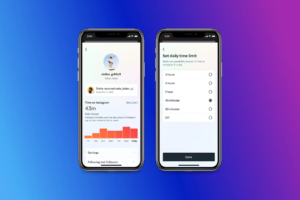
Key Takeaways:
- NYC presents unique challenges for physical rehabilitation due to its fast-paced lifestyle and crowded environment.
- Cultural competence in therapy is essential, as diverse backgrounds influence health perceptions and treatment preferences.
- Teletherapy and experiential therapies are growing trends in NYC physical therapy, enhancing accessibility and engagement.
- Look for physical therapists with a Doctor of Physical Therapy (DPT) degree and specialized certifications to ensure quality care.
- Finding a therapist who specializes in your specific condition can lead to more effective treatment outcomes.
- Client testimonials and feedback are valuable for assessing the trustworthiness and effectiveness of therapists.
- Technology in physical therapy is enhancing patient assessment and adherence to rehabilitation plans through data-driven approaches.
- Balance between manual therapy and exercise-based rehabilitation is often the most effective strategy for recovery.
- Staying motivated in rehabilitation can be supported by community groups and involving friends or family members.
- Nutrition significantly impacts recovery; a balanced diet and hydration are crucial for optimal healing.
- Creating a strategic wellness plan tailored to urban living is essential for lasting health changes beyond rehabilitation.
The Heart of NYC: Understanding the Landscape of Physical Therapy
The Unique Challenges of Urban Rehabilitation
New York City, with its bustling streets and frenetic pace, presents unique challenges for those seeking physical rehabilitation. As residents navigate the concrete and often crowded environment, the impact on physical health can be significant. Workers commute long hours, often resulting in poor posture and back pain, while the general fast-paced lifestyle leads to stress-related injuries and conditions. The sheer number of rehabilitation centers available can also add to the confusion. Patients must discern which facilities offer the best practices and are equipped to handle their specific needs. Moreover, public transportation can make it difficult for some individuals, particularly the elderly or those with disabilities, to attend regular sessions. Urban rehabilitation within NYC must not only consider physical ailments but also integrate solutions that accommodate the demanding lifestyle of New Yorkers, making personalized assessments and treatment plans vital.
Cultural Considerations in Treatment Approaches
New York is a melting pot of cultures, and this diversity significantly influences physical therapy practices. Different cultural backgrounds can affect how individuals perceive their health, healing, and healthcare professionals. For instance, some cultures may prefer holistic approaches, emphasizing body and mind interconnectedness, while others may lean towards traditional, medically-centered practices that prioritize physical solutions. This rich tapestry of beliefs calls for therapists who are culturally competent and sensitive, ensuring they respect patient backgrounds while delivering effective treatments. Moreover, language barriers can also pose challenges in communication. Therefore, it’s crucial for patients to seek therapists who offer multilingual services or possess the tools to bridge these gaps. By understanding the cultural nuances involved in rehabilitation, practitioners can create more effective, trust-based relationships with their patients, allowing for improved outcomes.
Trends in Physical Therapy Within the Concrete Jungle
The field of physical therapy in NYC is evolving rapidly, influenced by technological advancements, insurance policies, and a greater focus on patient-centered care. One significant trend is the integration of teletherapy, which emerged as a prominent solution during the COVID-19 pandemic. Remote sessions offer convenience, allowing patients to receive guidance without the added stress of travel. This model has expanded access to care for those who might struggle with mobility or time constraints. Another trend in urban rehabilitation is an increased emphasis on experiential therapy, which features outdoor physical experiences as a form of rehabilitation. City parks serve as an excellent backdrop for these therapies, offering a connection to nature that can enhance mental and emotional well-being. Finally, holistic approaches combining traditional physical therapy with practices such as acupuncture, mindfulness, and yoga are gaining traction. Such strategies recognize the need for comprehensive treatments that address physical, emotional, and mental health, promoting a well-rounded recovery process in the ever-evolving landscape of NYC health care.
Unveiling Credentials: What to Look for in a Physical Therapist
Decoding Certifications: What Do They Really Mean?
Choosing a physical therapist can be daunting, particularly with the vast array of certifications and titles that exist in the field. The foundational credentials one should look for include a Doctor of Physical Therapy (DPT) degree, which ensures that the practitioner has undergone rigorous training. Additionally, certification from the American Board of Physical Therapy Specialties (ABPTS) can indicate that a therapist has achieved advanced knowledge in a specific area, such as orthopedics, neurology, or pediatrics. Furthermore, therapists may also hold certifications in specialized techniques like manual therapy or sports rehabilitation, each of which reflects their skill set and approach to treatment. Understanding these credentials is essential for patients; it helps in assessing whether the therapist’s education aligns with their rehabilitation needs. Beyond formal qualifications, avid participation in continued education and industry conferences is vital. A therapist who demonstrates a commitment to staying current with therapeutic advances will likely provide the most effective care.
The Importance of Specializations: Finding Your Expert Match
Specialization in physical therapy allows professionals to become experts in treating specific conditions or populations. This can be particularly critical in a diverse city like New York, where patients may present with a wide range of issues from sports injuries to post-operative recovery. For example, an orthopedic specialist is likely to be well-versed in surgical rehabilitation and chronic pain management following injuries, which can be crucial for a sports enthusiast. On the other hand, a therapist specializing in geriatric care understands the nuances of aging bodies, including fall risk assessments and tailored exercises aimed at preserving mobility. When searching for a NYC physical therapist, consider your personal health needs and goals. Don’t hesitate to ask about their specialization, treatment methods, and previous experience with similar cases. Finding a therapist whose specialty aligns with your specific condition can lead to more effective treatment outcomes and a smoother recovery process.
Client Testimonials: The Gold Standard of Trustworthiness
In the world of healthcare, personal recommendations and client testimonials are invaluable. They offer insights into the quality of care and the success stories that accompany a therapist’s expertise. When reading testimonials, look for those that describe not only the clinical skills of the therapist but also the overall patient experience, including comfort levels, communication, and responsiveness. Online reviews and social media platforms can provide a wealth of information. However, it’s essential to consider the context of the feedback; every patient is different, and what worked for one individual may not suit others. Engaging directly with former patients, when possible, can give you a better sense of the therapist’s practice. Additionally, networking with other health professionals for recommendations can lead to finding highly regarded therapists that may not yet be well known. Authentic feedback is crucial for making an informed choice about your rehabilitation journey.
Tailoring Your Experience: Personalized Treatment Plans You Can Trust
The Role of Technology in Modern Rehabilitation Techniques
The integration of technology into physical rehabilitation is poised to revolutionize the patient experience in urban settings like NYC. Many clinics are now outfitted with advanced equipment that allows for personalized assessments, ensuring that treatment plans are reliable and evidence-based. For example, wearable technology can track movement patterns, providing real-time data that therapists use to adjust treatment protocols dynamically. Moreover, tools such as computerized motion analysis can pinpoint areas for improvement, guiding patients towards more effective rehabilitation outcomes. Virtual reality (VR) is also making its mark; it offers immersive environments for rehabilitative exercises that enhance motor skills and functional abilities. As technology continues to advance, integrating these innovations into physical therapy enhances the engagement and efficacy of rehabilitation, making it a more appealing option for patients navigating a fast-paced urban lifestyle.
Understanding the Best Methods: Manual Therapy vs. Exercise-Based Rehabilitation
When it comes to physical therapy, treatment methodologies typically fall into two broad categories: manual therapy and exercise-based rehabilitation. Manual therapy encompasses hands-on techniques such as joint mobilization, massage, and soft tissue manipulation. These techniques are generally used to alleviate pain, enhance mobility, and promote relaxation, effectively providing immediate relief for patients suffering from acute pain or discomfort. In contrast, exercise-based rehabilitation focuses on building strength, improving flexibility, and restoring functional movement through structured exercise regimens. This approach is particularly beneficial during the later stages of recovery or for preventing future injuries. Each method has its merits, and often, the best approach for a patient is a combination of both. Collaborating closely with your physical therapist to find the right balance tailored to your unique condition and rehabilitation goals is key to a successful recovery.
Tracking Progress: How Data-Driven Approaches Enhance Recovery
In today’s healthcare environment, tracking patient progress using data-driven approaches has become increasingly vital. Physical therapists are incorporating sophisticated tools and software that allow for precise tracking of a patient’s recovery through metrics such as strength, range of motion, and functional ability. This information is not only useful for making immediate adjustments to the treatment plan but also for documenting recovery over time. By leveraging data, therapists can identify trends and outcomes, which can enhance their understanding of what treatment strategies work best for various conditions. More importantly, engaging patients in this process by sharing progress reports helps motivate them, encouraging adherence to rehabilitation plans. In the context of NYC’s fast-paced lifestyle, having a clear and visible tracking mechanism can significantly enhance a patient’s commitment to their wellness journey.
Beyond the Clinic: Integrating Therapy into Your NYC Lifestyle
Staying Motivated: Finding Support in the City that Never Sleeps
The relentless hustle of NYC can sometimes undermine motivation, particularly when navigating a long-term rehabilitation process. Maintaining enthusiasm for recovery is essential, and finding support in this bustling environment can make a significant difference. Consider engaging with community support groups or physical therapy forums that allow you to connect with others undergoing similar experiences. Many clinics also offer group therapy sessions where patients can interact and motivate each other through shared goals and experiences. Additionally, seeking out friends or family members who can exercise with you or attend therapy sessions as a support chain can propel you toward your goals. Reflecting on personal progress and celebrating small victories creates a culture of positivity, integral for staying motivated and engaged during rehabilitation in a city filled with distractions.
Navigating Nutrition: How Diet Impacts Your Recovery Journey
Nutrition plays a pivotal role in recovery and should not be overlooked as part of a rehabilitation plan. In a city known for its diverse culinary offerings, understanding the relationship between diet and recovery can empower patients to make informed choices. Consuming a balanced diet rich in lean proteins, whole grains, healthy fats, and plenty of fruits and vegetables can support healing by reducing inflammation and promoting muscle repair. Additionally, staying hydrated is vital for optimal muscle function and overall health. Consulting with a nutritionist specialized in recovery can provide personalized dietary guidance that addresses specific needs, especially considering any concurrent health conditions or dietary restrictions. The fast-paced NYC lifestyle often tempts individuals into choosing quick, unhealthy options; however, establishing nutritional goals and meal prepping can help ensure adherence to a recovery-supportive diet.
Maintaining Wellness: Strategies for Lasting Change in an Urban Environment
To achieve lasting changes regarding health and wellness, it is essential to create a strategic plan that considers the unique demands of urban living. This includes setting realistic and tangible health goals that are adaptable to your busy schedule. Incorporating physical activity into your daily routine—whether it’s through walking or cycling to work, engaging in lunchtime workouts in nearby parks, or attending evening wellness classes—is key to sustained fitness levels. Additionally, fostering self-care routines, such as regular mindfulness practices, relaxation techniques, or even engaging in community-oriented activities, can significantly improve stress management and enhance overall well-being. Establishing these habits requires a proactive approach; however, over time, they can lead to holistic health benefits that extend well beyond the rehabilitation process. Remember, NYC is not just a backdrop; it’s an active participant in your wellness journey, offering endless possibilities for physical and mental rejuvenation.
FAQ
Question: How can I determine if a physical therapist is a good fit for me? – It’s essential to assess their credentials, specializations, and communication style. You may also want to have an initial consultation to see if you feel comfortable with their approach and philosophy regarding treatment.
Question: Are teletherapy sessions as effective as in-person visits? – Teletherapy can be equally effective for many conditions; it offers flexibility and convenience. However, it is vital to ensure that the therapist utilizes proper techniques and tools to deliver effective remote sessions.
Question: How often should I attend physical therapy sessions? – The frequency of therapy sessions varies based on individual needs and recovery goals, but typically therapists suggest attending 1-3 times a week. Your physical therapist will help tailor a plan suited to your progress and condition.
Question: What are some effective ways to stay motivated during rehabilitation? – Finding a support system, setting small achievable goals, tracking progress, and incorporating variety into your sessions can help maintain motivation during your recovery journey.
Question: Is it necessary to have a referral from a physician to see a physical therapist? – While many therapists accept patients without a doctor’s referral, some insurance plans may require one. It’s best to check with your insurance provider and your therapist’s office before scheduling a visit.
Question: Can physical therapy techniques be adapted for seniors or individuals with disabilities? – Yes, physical therapists are trained to adapt techniques and create customized treatment plans that cater to the unique needs of seniors and individuals with disabilities, ensuring safe and effective rehabilitation.
Question: How does hydration affect my recovery process? – Proper hydration is vital for maintaining optimal muscle function and recovery. It can help reduce fatigue, maintain energy levels, and support overall health during rehabilitation.
Question: What should I do if I’m not seeing progress in my therapy sessions? – If you’re not making the expected progress, it’s important to communicate your concerns with your therapist. They may need to adjust your treatment plan, or you may want to seek a second opinion for further evaluation.
Useful Resources
- American Physical Therapy Association (APTA)
- National Board of Certification in Physical Therapy (NBCPT)
- Move Forward PT
- Federation of State Boards of Physical Therapy (FSBPT)
- National Center for Biotechnology Information (NCBI)
- Rehabilitation Nursing Association
- Harvard Health Publishing
- WebMD






